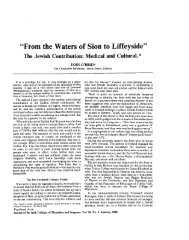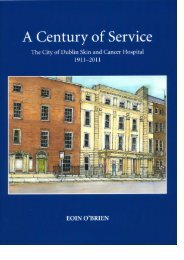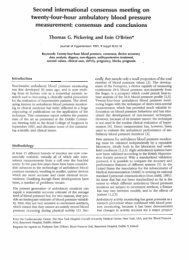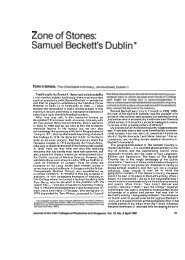Nevill Johnson: Paint the smell of grass - Eoin O'Brien
Nevill Johnson: Paint the smell of grass - Eoin O'Brien
Nevill Johnson: Paint the smell of grass - Eoin O'Brien
Create successful ePaper yourself
Turn your PDF publications into a flip-book with our unique Google optimized e-Paper software.
exhibited <strong>the</strong>m above all in <strong>the</strong> 1970s and <strong>the</strong>ir visual sophistication and control <strong>of</strong> effect was<br />
<strong>of</strong>ten held in balance by a daring and wit that perhaps best expresses <strong>Nevill</strong> <strong>Johnson</strong>’s personality<br />
as a mature artist.<br />
As with photography and collage, printmaking revealed <strong>Johnson</strong>’s willingness to work hard at<br />
a new medium, as well as his eventual ease with <strong>the</strong>se acquired skills. A series <strong>of</strong> monotypes from<br />
around 1965, <strong>of</strong> landscapes peopled with acrobats, looks back to <strong>the</strong> circus families and travellers<br />
<strong>of</strong> <strong>the</strong> 1950s in <strong>the</strong>ir subject, but <strong>the</strong>y treat <strong>the</strong> figures in terms <strong>of</strong> an arrangement <strong>of</strong> abstract<br />
forms that have a close formal relationship to <strong>the</strong> landscape around <strong>the</strong>m. While <strong>the</strong>re remains an<br />
element <strong>of</strong> <strong>the</strong> pathos <strong>of</strong> <strong>the</strong> earlier paintings, <strong>the</strong>se works also introduce <strong>the</strong> humour that is to<br />
be increasingly present in <strong>Johnson</strong>’s paintings and drawings. His tentative return to confidence as<br />
a painter is surprising as <strong>the</strong>se monotypes and <strong>the</strong> etchings <strong>Johnson</strong> made in <strong>the</strong> same period<br />
(work which alone would establish him as an artist <strong>of</strong> note) indicates a clear and confident<br />
establishment <strong>of</strong> a change in <strong>the</strong> mood and style <strong>of</strong> his work. The application <strong>of</strong> this painting style,<br />
however, can only be fully judged by <strong>Johnson</strong>’s first exhibition held after this long break from<br />
showing publicly.<br />
It is interesting that on at least two occasions in <strong>the</strong> 1960s, <strong>Johnson</strong> continued to exhibit work<br />
in <strong>the</strong> Irish Exhibition <strong>of</strong> Living Art. He included three paintings in 1966, including Red<br />
Landscape and Morning Figure, and two in 1968, Foliation and No Title. His contact address is<br />
given c/o <strong>the</strong> Dawson Gallery, a continuation <strong>of</strong> <strong>the</strong> Waddington Gallery ins<strong>of</strong>ar as it was run by<br />
Leo Smith, who had worked for Victor Waddington, and <strong>the</strong>n taken over by Smith’s assistant,<br />
John Taylor. This does contradict suggestions by <strong>Johnson</strong> that he did not exhibit during his<br />
period <strong>of</strong> ‘reappraisal’ and it is also interesting that having looked seriously at <strong>the</strong> gallery scene in<br />
London, he still preferred to exhibit in Dublin. Here <strong>the</strong>re was undoubtedly still interest and<br />
familiarity with his work, but it is unlike <strong>Johnson</strong> to keep a foot in a safe camp. As none <strong>of</strong> <strong>the</strong>se<br />
works are illustrated it is difficult to know in what manner he was <strong>the</strong>n working, but one small<br />
surviving painting from this time suggests a much more pared down and more abstract style.<br />
His first one-man exhibition for probably fifteen years took place in December 1970 at <strong>the</strong><br />
Collector’s Gallery on <strong>the</strong> Portobello Road in west London, not far from where <strong>Johnson</strong> was<br />
living at that time. It was successful and <strong>the</strong> artist’s ledgers record various sales, some to friends,<br />
but a number to new collectors. This group <strong>of</strong> thirty-one paintings looks forward to <strong>the</strong> next<br />
three decades <strong>of</strong> exhibitions in a number <strong>of</strong> ways. Most obviously, all <strong>the</strong> larger paintings are in<br />
acrylic. While <strong>the</strong>re are references to London (Holland Park Encounter, Communication in<br />
Kensington Gardens) <strong>the</strong> time spent in Wilby has brought a gentler tone to many <strong>of</strong> <strong>the</strong> titles.<br />
Siesta, Landscape with Cows, Country House, Landscape with Birds, Figure in Autumn Landscape.<br />
Whereas before <strong>the</strong> landscape was scarred by atomic explosions and conflict between humans, it<br />
now provides an escape from human activity. Living and working in <strong>the</strong> Suffolk countryside,<br />
66 <strong>Nevill</strong> <strong>Johnson</strong> l <strong>Paint</strong> <strong>the</strong> Smell <strong>of</strong> Grass<br />
Morning Figure<br />
<strong>Nevill</strong> <strong>Johnson</strong> l Wilby and after 1959–1977 67









